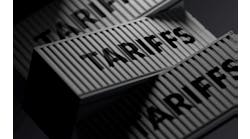- industry verticals/applications
- technology
- scope of supply (types of services provided)
- geographical presence
- company setup.
Industry verticals
When asked to select their top-served end markets, up to three, SIs selected food and beverage (50%), water and wastewater (29%) and OEM/industrial equipment (23%) (Figure 1). The first two markets are widely distributed geographically providing many SIs with the opportunity to participate. There are other industries that tend to be more geographically concentrated, like automotive and oil and gas, thus limiting their appeal.
- Those serving oil and gas, chemicals and petrochemicals understand that they work in explosive and poisonous environments where their processes are to operate continuously for long periods of time, ideally until the next scheduled shutdown. This has big implications for the selection, installation and operation of equipment.
- Those serving the life-science industries understand that their clients deliver products that are consumed—ingested or injected—by individuals. Food and Drug Administration (FDA) regulations play a key role in ensuring product safety. Their requirements around validation are of paramount importance for this industry. SIs serving this industry need to master FDA validation standards.
Technology
The selection of the industries and/or applications to serve has implications for the automation technology to deploy. From the perspective of the control system, industries can be grouped into process, discrete and batch. Over time the border lines between these categories have blurred as the systems have become more flexible (Table 1).
Services provided by system integrators
- operator (client) training
- solution design, functional specification
- electrical design and construction
- mechanical design and construction
- functional safety design
- cost estimation
- risk assessment
- engineering staffing services
- remote monitoring of critical assets / processes
- data management services.
Geographical presence
Company setup
- independent system integrator
- machine builder
- IT SI/consulting
- engineering, procurement and construction (EPC)
- automation equipment vendor
- end user (Figure 2).








